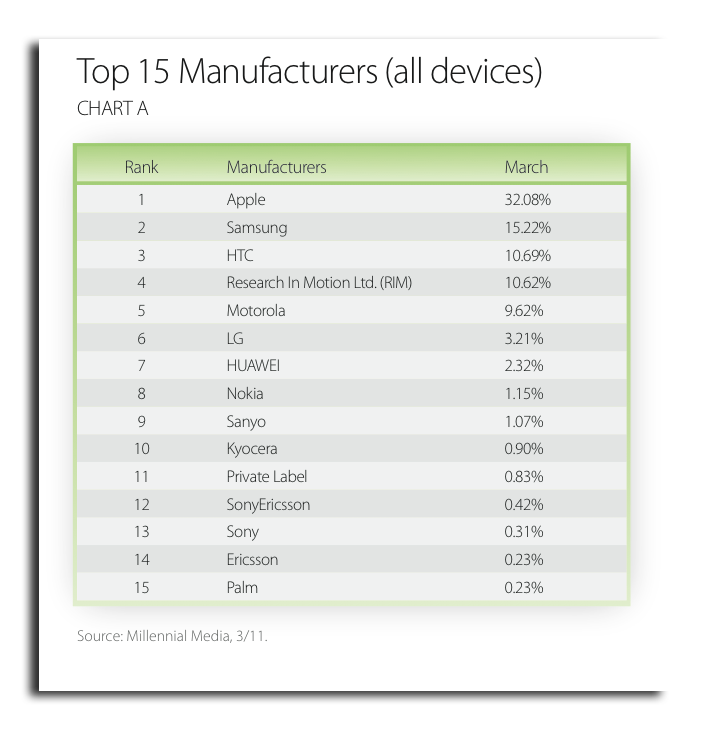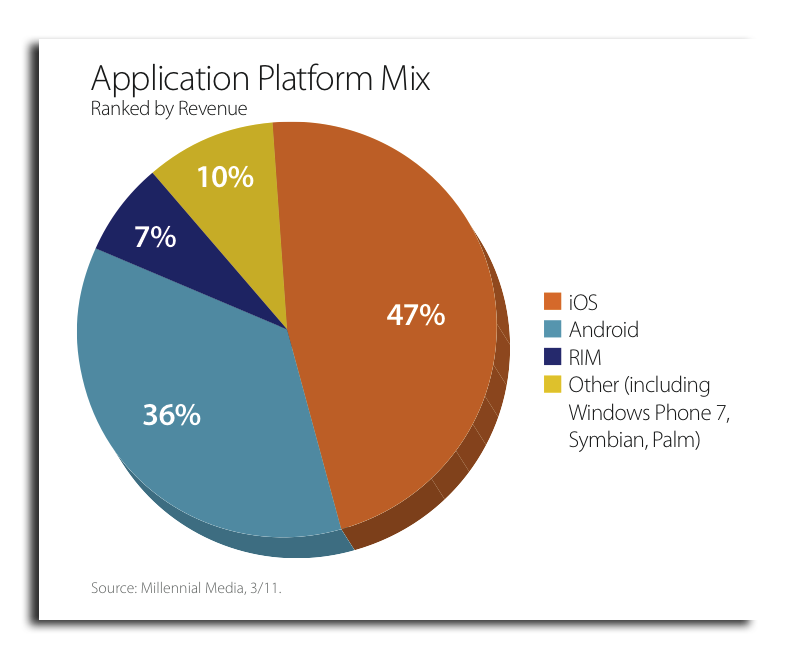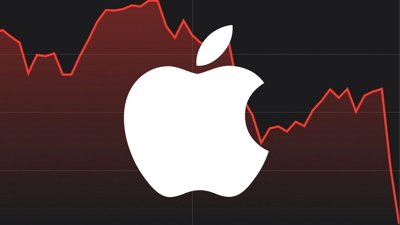The information was revealed on Thursday as part of the advertising network's monthly "Mobile Mix" report. Based on ad impressions on Millennial Media's network, the iPhone grew 17 percent month over month, and the iOS mobile operating system grew 11 percent.
Apple's strong performance in the mobile space was largely tied to the Verizon iPhone, which accounted for 8.2 percent of iPhone advertising impressions in the month of March.
The growth of the iPhone in March outpaced all devices running the Google Android mobile operating system on Millennial Media's network, though Android remains the largest platform. Apple's share of smartphone ad impressions went from 28 percent a month prior to 31 percent in March, while Android slipped from 51 percent to 48 percent.
Android's losses in March are a reversal from previous months, as Google's mobile operating system has continued to grow on Millennial's network. For example, just last August, Apple's iOS accounted for 48 percent of smartphones, while Android took just 26 percent.
In March, Apple remained the top manufacturer on Millennial's network when all devices, including tablets, were factored in, taking 32.08 percent. The iPhone, too, was the top smartphone, representing 19.42 percent of all devices.
And when breaking down application revenue by platform, Apple took a 47 percent share, despite having a smaller number of devices seen in Millennial's advertising network. Android, the largest platform, took a 36 percent share.
Connected devices like the iPad increased 21 percent month over month, and now make up 17 percent of the device impression share. Smartphones account for 64 percent of devices, while "feature phones" are 19 percent.
March also saw the launch of the iPad 2, and Millennial's network saw iPad impressions grow accordingly, 7 percent month over month.
Millennial Media became the largest independent advertising network after Google acquired AdMob, and Apple bought Quattro Wireless last year. Apple's acquisition of Quattro paved the way for the company to launch its own advertising network, iAds, in 2010.
 Katie Marsal
Katie Marsal




-xl-m.jpg)



-m.jpg)






 Marko Zivkovic
Marko Zivkovic
 Malcolm Owen
Malcolm Owen
 Chip Loder
Chip Loder
 Christine McKee
Christine McKee
 William Gallagher
William Gallagher
 Amber Neely
Amber Neely

 Andrew Orr
Andrew Orr

-m.jpg)






6 Comments
This is only the US market I assume.
It is not at all surprising that Android gets far more ad impressions: their app downloads are mostly free (hence, ad-supported) compared to Apple (many more are priced and hence, ad-free).
I don't know how ad impressions are much of a valuable statistic to anyone other than the folks at Apple trying to sell iAds. judging by the articles at AI [and all rumor sites] Apple must have a VERY tight lid on new products & services. [Either that or they're all doing nothing but swimming Scrooge McDuck-style in their giant war chest of cash and laughing]
Nothing surprising there. When someone gets a new smartphone, the first thing would be to download some free apps to try it out and basically 'fill the homescreens'. Paid apps download usually come later when consumers are more familar with the devices and which are the best apps etc.
It is not at all surprising that Android gets far more ad impressions: their app downloads are mostly free (hence, ad-supported) compared to Apple (many more are priced and hence, ad-free).
I guess you missed the second graph that was showing Revenue from Mobile applications. This is showing revenue from in-app ads, of which iOS has a higher cut then Android OS.
Sure, you might stick with paid applications. I do as well. But a vast majority of consumers prefer free content (no matter the OS). Even someone who buys 2-3 paid apps a month might still have well over a dozen free apps that they play.